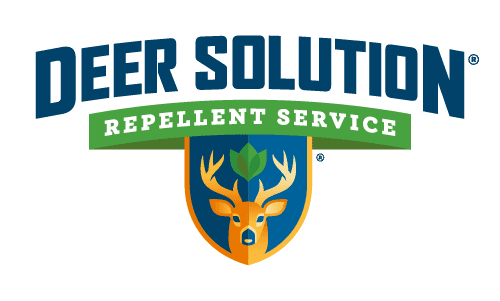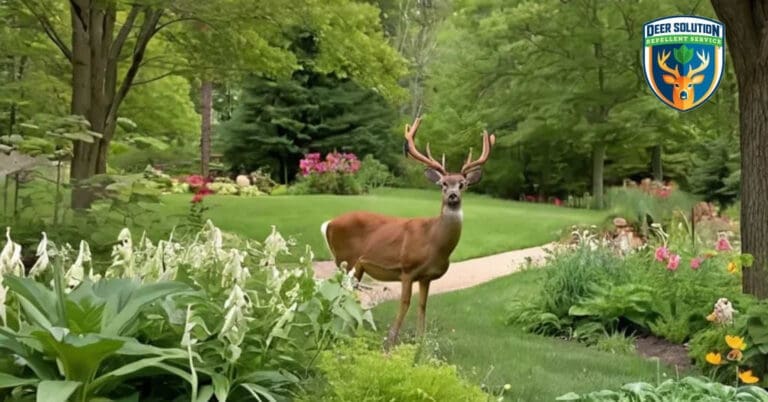Gardeners often wonder, do deer eat mayapples? Mayapples (Podophyllum peltatum) are native to North American woodlands, and their role in forest ecosystems goes beyond aesthetics. These unique plants not only add visual interest to a garden but also contribute significantly to biodiversity. But how do they interact with local wildlife, especially deer? Let’s explore the relationship between mayapples and deer while uncovering eco-friendly ways to protect your garden.
Mayapples: A Pillar of Native Forest Gardens
Mayapples are more than just ornamental plants. Their large, umbrella-like leaves form dense colonies that provide essential ground cover, helping to prevent soil erosion and support the micro-ecosystems of the forest floor. In addition to their ecological role, mayapples produce a single, delicate white flower in the spring, which later turns into a fruit that is toxic to humans but consumed by certain wildlife species.
Their value in creating sustainable, biodiverse gardens makes them a favorite among eco-conscious gardeners. However, despite their beauty and environmental benefits, it’s important to understand how deer might interact with these plants.
Seasonal Interactions: How Mayapples and Deer Coexist
Deer are opportunistic feeders, and their diet changes based on the season and food availability. In early spring, when fresh vegetation is scarce, deer may be more inclined to nibble on plants they normally avoid, including mayapples. While mayapples contain toxic compounds that deter many animals, deer are known to browse on them when more nutritious food sources are limited.
That said, mayapples are generally not a preferred food for deer. These plants are typically left alone when other palatable options, such as tender young shoots and leaves, are available. Still, during harsh winters or in areas of high deer population, gardeners may notice some browsing on mayapples.
Creating a Biodiverse Garden with Mayapples
For gardeners interested in promoting biodiversity, mayapples can be a cornerstone of a native plant garden. They thrive in shaded woodland environments and pair well with other native plants that support local wildlife. Incorporating mayapples alongside species like trillium, ferns, and wild ginger can create a natural, resilient garden that offers both beauty and ecological benefits.
These companion plants not only help fill in the understory of your garden but also provide a natural defense against deer. By fostering a diverse ecosystem, you can reduce the likelihood of deer focusing solely on your mayapples or other prized plants.
Supporting Forest Ecosystems: Mayapples and Groundcover Protection
Mayapples play a critical role in protecting the forest floor. Their broad leaves shield the ground from direct sunlight, helping to retain moisture and reduce soil erosion. This groundcover also creates a habitat for beneficial insects, amphibians, and small mammals, contributing to a balanced ecosystem. In gardens designed to mimic natural forests, mayapples offer a unique opportunity to support both plant and animal life.
Additionally, their ability to prevent erosion makes mayapples ideal for sloped or hilly areas in gardens, where they can help stabilize the soil. Their dense, spreading growth pattern ensures that they occupy space where weeds might otherwise take hold, reducing the need for chemical herbicides.
Natural Deterrence Through Plant Selection
While mayapples are not particularly attractive to deer, combining them with other deer-resistant plants can further enhance your garden’s resilience. Aromatic herbs such as lavender, rosemary, and thyme can act as natural deterrents, helping to keep deer at bay. Planting native grasses and ferns alongside your mayapples can also create a diverse, layered garden that discourages deer from grazing.
By carefully selecting a variety of plants that deer typically avoid, you can create a garden that not only supports biodiversity but also minimizes the risk of deer damage. Companion planting with plants that deer dislike ensures that even in times of food scarcity, your mayapples and other valuable plants remain relatively safe from browsing.
Achieving a Thriving Garden with Mayapples
Ultimately, mayapples are an excellent choice for gardeners looking to cultivate a native, low-maintenance garden that supports local wildlife while standing up to occasional deer browsing. Their toxicity and dense growth provide a natural defense, but they’re best protected when integrated into a diverse, resilient garden that leverages other deer-resistant species and sustainable practices.
By focusing on seasonal care, fostering biodiversity, and selecting the right plant companions, you can ensure that your mayapples and other woodland plants thrive. Whether you’re creating a native forest garden or simply adding groundcover to a shaded area, mayapples offer both beauty and ecological value.
For gardeners looking to further strengthen their defenses against deer, incorporating professional repellent services can provide added protection. Deer Solution’s eco-friendly, all-natural repellent services are designed to keep your landscape healthy and deer-free, ensuring that your garden remains a sanctuary for you and the environment alike.








